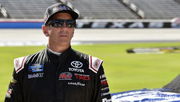

It has been a long time since the House vs. NCAA got into a dispute. A lawsuit was filed by Division I college athletes against the NCAA and its Power Five conferences back in 2020. It was raised by Texas Christian University basketball player Sedona Prince and Arizona State University swimmer Grant House. They sought NIL and an injunction that would force the NCAA to get rid of the restriction on revenue sharing. Things started to settle down when, on May 23, 2024, the NCAA tried to meddle things out, settling the lawsuit for US$2.75 billion. If you think it’s a huge amount, then wait for the athletes’ demands.
Watch What’s Trending Now!
There have been a lot of roadblocks in the House vs. NCAA lawsuit. Back in September, Judge Claudia Wilken refused to grant approval to the antitrust settlement. The fact that any boosters would be able to provide to athletes for a “valid business purpose” didn’t sit well with her. So that’s when she put the $2.75 billion NCAA settlement on hold.
But a month later, on the slight revision of the clause, Wilken approved the settlement. In this lawsuit, lawyers represented three separate groups of athletes. It’s time for them to talk business. On the Yahoo! Sports podcast, analysts Dan Wetzel, Pat Forde, and Ross Dellenger shared some interesting news. As Forde stated, “The attorneys are seeking 20% of the $2.8 billion settlement in the house case.” And that makes up to?
ADVERTISEMENT

ADVERTISEMENT
$560 million, folks! If you think that’s all that they want, be prepared for some more numbers dropping in. Forde revealed, “They want 1% of the total annual revenue share with athletes from the schools going forward, which is another couple hundred million.” So that’s how the attorneys want their share of the revenue after helping the NCAA settle the case.
That’s what Dellenger calls the “multi-level marketing scheme,” as he says, “they list a figure in the documents when you combine it all of 725 million.” Well, now that’s something they expect for taking the risk to bring the NCAA out of the trouble. Plus, they had to do a lot of work to establish a case that was able to convince the House party for settlement. Still confused about the motive?
ADVERTISEMENT
Forde read the exact wording, “We should get over 10 years equivalent to 20% of the settlement fund and 10% additional compensation fund. So they’re 20%, 395 million, 60 million in additional upfront injunctive relief award of 20 million.” Here is some more news about the other lawsuit that the NCAA had to deal with.
NCAA’s legal woes continue
Vanderbilt Commodores quarterback Diego Pavia got into legal complications with the NCAA. The signal-caller is suing the NCAA over its eligibility standards. As per the rules, the NCAA Division I Board of Directors along with other officials agreed that they would waive for junior college players. Doing so would grant them another year of eligibility.
ADVERTISEMENT
However, Pavia does not seem to be okay with the fact that his junior college playing season would count as part of his four seasons of eligibility as an athlete in the NCAA. Previously, the Vandy QB played two seasons at New Mexico State, followed by another two years in New Mexico. But thanks to Judge Will Campbell, who helped keep the talented QB in college football a little longer.
As The Athletic reporter Ralph D. Russo informed, the NCAA DI board granted a blanket waiver that would give a free pass for non-NCAA school athletes to extend their eligibility for one more year. Now that the NCAA has handled the Diego Pavia case well, let’s see if they agree to pay the attorneys’ demands.
Top Stories
Fact Check: Were Greg Biffle & Family On the Plane That Crashed At Statesville, North Carolina?

Carlos Alcaraz’s Split With Coach Resulted From ‘Major Disagreements’ With His Father

WNBA Responds to WNBPA Strike Authorization Vote With Official Statement

“Rest in Peace”: Prayers Pour In From Dan Marino as Dolphins Legend Mourns Tragedy in South Florida Football

Who Is Greg Biffle’s Wife? Everything You Need to Know About Cristina Grossu

Amid Public Feud, Cowboys Legend Michael Irvin Makes a Bold Troy Aikman Statement

ADVERTISEMENT
ADVERTISEMENT
ADVERTISEMENT
ADVERTISEMENT

